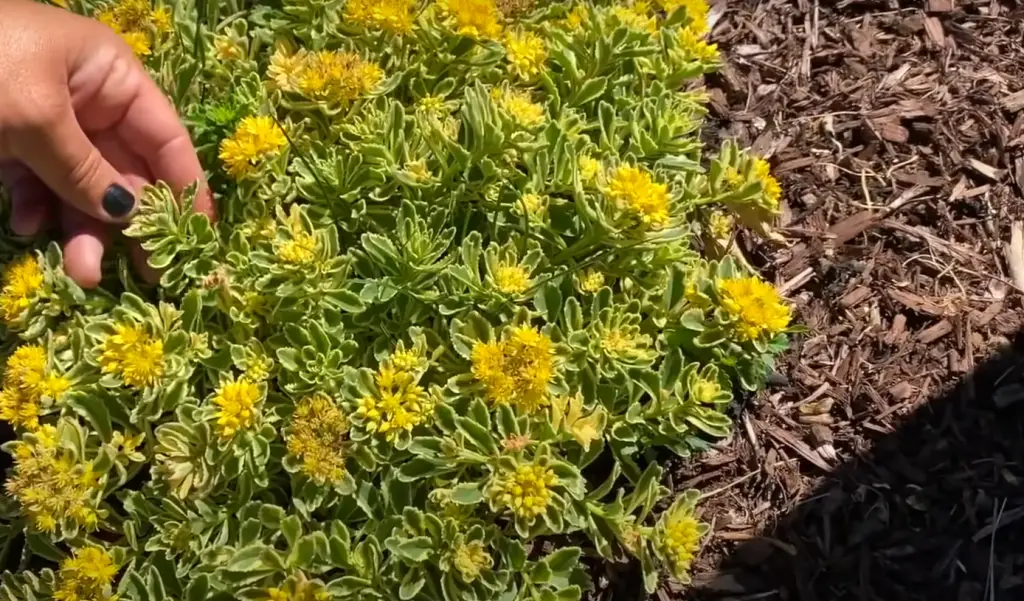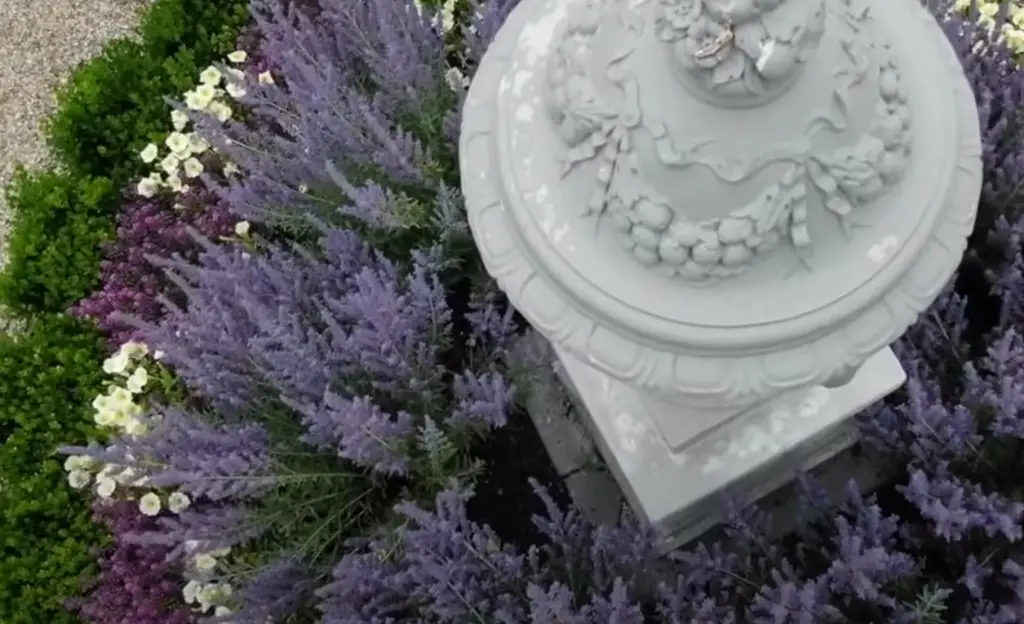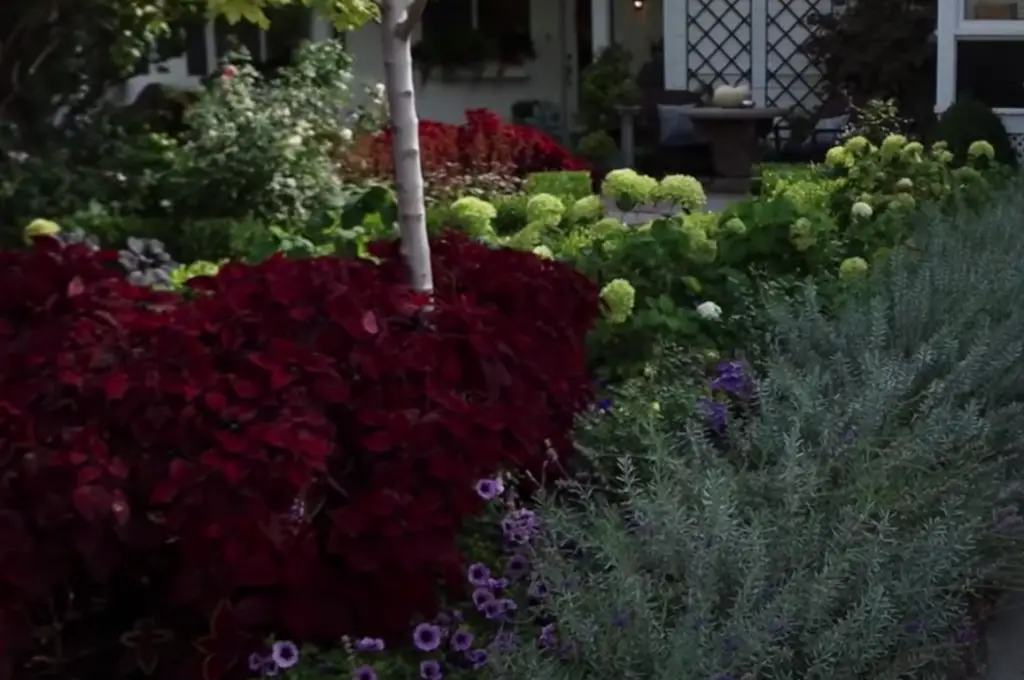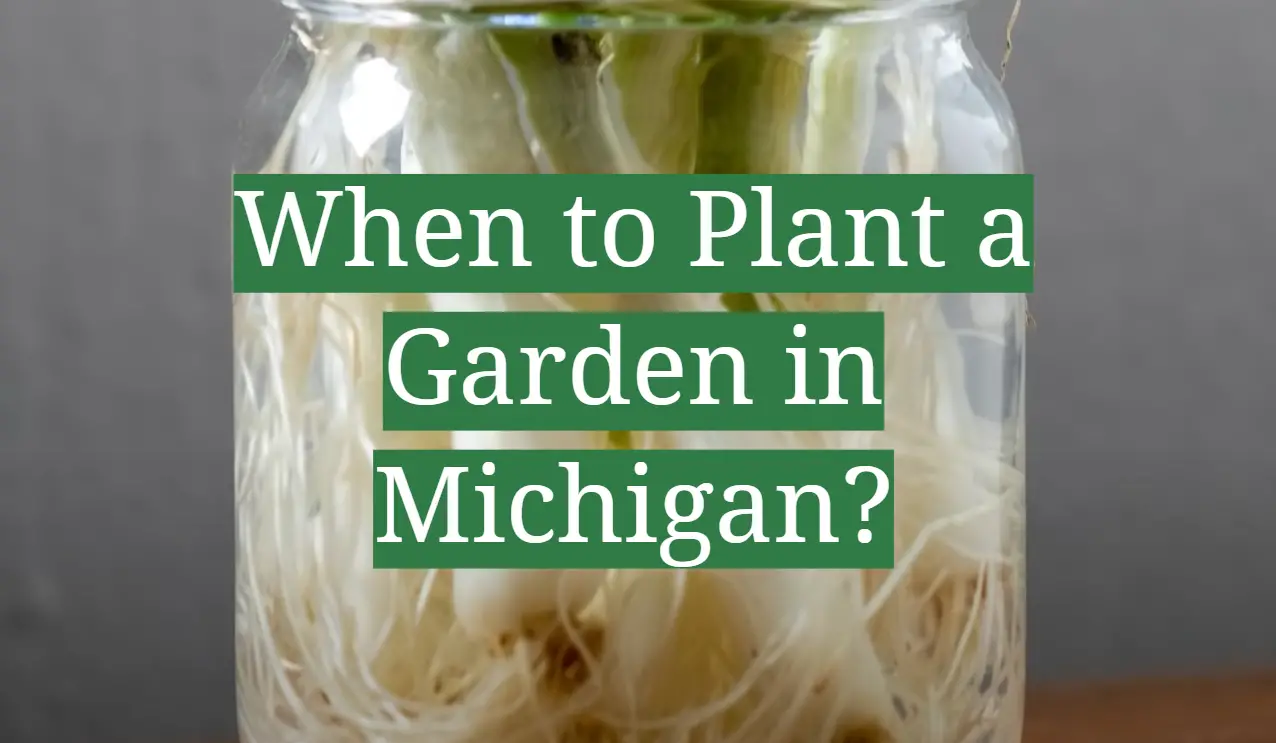When to plant a garden in Michigan can be confusing with the large range of temperatures and weather conditions the state experiences. The short answer is that you can plant a garden almost any time of year, as long as you are prepared for the weather conditions and have chosen plants that will thrive in your climate. In this epic guide, we will cover everything you need to know about when to plant a garden in Michigan, so you can get started on your gardening journey!
When Do Cold and Warm Seasons Start in Michigan?
Michigan is a great state for gardening. The climate is perfect for growing a wide variety of fruits, vegetables, and flowers. However, there are a few things to keep in mind when planting your garden. One of the first things you should consider before planting your garden is the climate.

A planting season is the time of year when a particular crop can be planted. The length of the growing season, climate, and weather conditions all play a role in determining when to plant.
There are two planting seasons in Michigan: the cold season and the warm season. The cold season typically runs from the end of March or the start of April, while the warm season starts when there’s no danger of frosts anymore, which is usually around the end of May.
While you can technically plant during either season, there are certain crops that do better in different seasons. [1],[2]
When to plant cold season crops
Cold season vegetables are those that can tolerate, and even thrive in, cooler temperatures. These vegetables are typically planted in the spring, after the last frost date or in early fall.
Some vegetables, such as peas, spinach and lettuce, are tolerant of cold weather and can be planted as soon as the ground can be worked in the spring. In general, cool season vegetables can be divided into two groups: those that tolerate frost (such as kale and broccoli) and those that do not (such as lettuce and spinach).
When to plant warm season crops
Warm season vegetables are those that prefer hot weather and won’t do well if the temperature dips below 60 degrees Fahrenheit. They include tomatoes, peppers, eggplants, beans, corn, and squash. If you want to get a jump on the growing season, you can start these plants indoors about four-six weeks before the last frost date in your area. Once they’re big enough to handle, transplant them into your garden.
Of course, Michigan weather is unpredictable, so it’s always a good idea to keep an eye on the forecast and be prepared to adjust your planting schedule accordingly.
What to Consider Before Planting
If you want your garden to be a success, it’s important to take the task of planting seriously. It’s not only about choosing the right plants, but also about making sure you plant them at the right time.
Succession
If you want to have produce all season, you need to plant in succession. This means planting new seeds or seedlings every few weeks, so that you have a constant supply of fresh produce.
One way to do this is to create a planting schedule. This will help you keep track of what needs to be planted when, so that you can ensure a steady supply of fresh produce throughout the growing season.
There are a few things to consider when creating your planting schedule:
- The first frost date in your area
- The length of the growing season
- The maturity dates of the plants you want to grow
With these factors in mind, you can create a planting schedule that will give you the best chance for success. Generally, it’s recommended you plant your crops with a timespan of two to three weeks in mind. This will ensure that you have a constant supply of fresh produce, without having too much of one thing.
Seed types
Another important factor to consider when planting your garden is what type of seeds you’re using. Some seeds are more delicate than others and need to be started indoors before being transplanted outdoors. Other seeds, such as hardier vegetables, can be planted directly in the ground.

Once you’ve determined what type of seed you have, it’s time to figure out when to plant them. This will largely depend on the climate in your area as well as the specific needs of the plant.
In general, most plants need about six to eight weeks of warm weather before they can be safely transplanted outdoors.
Temperature of the soil
Besides the air temperature, you also need to consider the temperature of the soil. The soil needs to be warm for these plants to thrive. For example, some plants won’t grow unless the soil temperature is above 65 degrees Fahrenheit. Cold season crops on other hand can handle soil temperatures as low as 40 degrees Fahrenheit.
You can check the soil temperature with a digital soil thermometer. Simply insert the probe into the ground and wait a few minutes for an accurate reading.
Mulching
Mulching is one of the most important things you can do for your garden. It helps to insulate the roots of your plants, keeps the soil moist, and prevents weeds from taking over.
If you’re not sure when to mulch, a good rule of thumb is to wait until the ground is thawed and the weather is warm enough that you can comfortably work outside without a coat.
Last Frost Dates in Michigan
The last frost date is the average date of the last spring freeze in your area. The importance of knowing your last frost date is crucial when deciding when to plant your garden.
The date can vary greatly from year to year, but the average last frost dates fall between the late March and early April. In northern parts you may even need to wait until mid-April or even early May. Keep in mind that these are only averages and there is always a chance of having a late or early frost.
There are a few different ways to plant your garden so that you can avoid frost damage. One way is to wait until after the last frost date to plant your garden. This is the simplest method, but it does have its drawbacks. The main drawback is that you will have a shorter growing season because you will be starting later in the spring.
Another way to avoid frost damage is to start your plants indoors and then transplant them into the garden after the last frost date. This method gives you a longer growing season because you are starting your plants earlier. The drawback to this method is that it requires more work on your part.

The best way to avoid frost damage is to use a combination of both methods. Start some of your plants indoors and then transplant them into the garden after the last frost date. This will give you a longer growing season and it will also help to insure that you have a successful garden even if there is an early or late frost. [1],[4]
Plant Hardiness Zones in Michigan
Plant hardiness zones are determined by the lowest average temperature a particular plant can withstand. The United States is currently divided into 13 different hardiness zones, with zone 13 having the warmest temperatures and zone one having the coldest. Michigan falls mostly in zones five and six, with some areas dipping into zone four. This means that most of the state has relatively mild winters, although it is important to remember that these averages are just that- averages. Every year there will be days or even weeks where the temperature dips below what is considered “normal” for your area.
Zone 4
For gardeners in zone four, the gardening season starts off in the month of April. This is the perfect time to start planting tomatoes, kale, spinach, and broccoli indoors. Outdoors, you can begin planting potatoes. Be sure to keep an eye on the forecast though- if there is a chance of frost, be sure to cover your plants or bring them indoors.
Starting May, you can start planting your crops like tomatoes, kale, spinach and broccoli outdoors. Zone four has a shorter growing season than the rest of Michigan, so it is important to make sure you are taking advantage of the warmer months.
As June arrives, so does summer! This is the perfect time to plant all of your favorite fruits and vegetables. Indoors, you should plant some beans, cucumbers, and squash. outdoors, you can plant peppers, tomatoes, and cabbage.
During July, you can transfer the crops you planted indoors in June outdoors. This is also a good time to plant some watermelon, cantaloupe, and pumpkins. Indoors, you should start growing some beets and carrots for the next month.
The last planting month for zone four gardeners is August. You can plant some fall crops like kale and spinach, as well as potatoes, onions, and garlic. It’s now safe to move beets and carrots outdoors.
By September, most of the fruits and vegetables will be ready to harvest in zone four. This is also a good time to start planting some cover crops like rye and oats. These will help improve the quality of your soil for next year’s garden. October signals the end of the gardening season for zone four gardeners. Be sure to harvest any remaining fruits and vegetables, as well as pull up your cover crops. You can also start planning and preparing for next year’s garden!
Zone 5
In zone 5 you can begin planting green crops in doors starting March. The soil should already be warm enough to plant potatoes outside. You can also start planting peas, spinach, and other early crops.

By the end of April you can plant most of your garden, including tomatoes, peppers, eggplant, squash, beans, and carrots. Be sure to wait until after the last frost date to plant these sensitive crops.
In May you can begin growing corn, squash and beans indoors. You can also plant melons, cucumbers, and pumpkins. Onions and beans should be already safe to plant outside.
June is a good time to transplant your seedlings that you started indoors into the garden. You can also direct seed squash, tomatoes and cucumbers.
Continue planting the remaining crops like kale, spinach, beets, and turnips in July. July and August are the best months to start succession planting. This means that you plant a crop, and then wait a few weeks and plant another crop in the same space. This will help to ensure that you have a continuous supply of fresh fruits and vegetables all summer and early Fall long.
You can also start planting garlic.Harvest season for zone five usually lasts from late September through October. Be sure to check your crops often and harvest them as soon as they are ready.
Zone 6
Zone six is the warmest zone in Michigan and includes the southernmost parts of the state.
If you are gardening in zone six, you can start planting your garden as early as mid-March. Although we still suggest growing crops inside during this period.
Starting April, you can start either transfering your plants from inside to outside or directly sowing your seeds in the ground. This is an ideal period to plant some leafy greens.
In May, you can plant tomatoes, carrots, onions, and other root vegetables in your outdoor garden. There’s no risk of frost anymore in this period.
June is a great time to keep planting carrots and start planting corn and squash directly in your garden.
You can keep planting brussels sprouts and cabbage outside in July, for kale and beets it’s best to plant them indoors.
It’s safe to transfer your beet and kale seedlings outdoors in August, meanwhile, keep planting lettuce, carrots, and turnips directly in your garden.

September is your last chance to plant some outdoor lettuce, peas and carrots before the harvest season.
And as for the harvest dates in zone six, it’s usually from late September to early November.
Keep in mind that the actual harvest time depends on the type of crop. For example, tomatoes need to be harvested as soon as they are ripe, while kale can be harvested a bit later. [3],[4]
FAQ
When should I start my outdoor garden in Michigan?
This is a great question, and the answer really depends on a few factors. The first factor to consider is what type of plants you want to grow. Some plants, like tomatoes, need warm weather to thrive, so you’ll need to wait until the last frost has passed before planting them outdoors. Other plants, such as pansies, can handle cooler temperatures and can be planted earlier in the season.
Soil temperature is what matters most for plant growth, so that’s something you should keep an eye on as well. You can find a soil thermometer at any gardening store, or even online. The ideal soil temperature for most plants is around 60-70 degrees Fahrenheit.
Another factor to consider is the weather forecast. If there’s a chance of frost in the forecast, it’s best to wait until the risk has passed before planting your garden.
What month is best to start a garden?
The best time to start a garden is in the spring, specifically April. This is because the weather is getting warmer and there is more daylight. Another reason why April is a good month to start a garden is because it gives plants enough time to grow before the hot summer months.
If you start your garden too late in the season, your plants will not have enough time to grow and produce fruit or vegetables. On the other hand, if you start your garden too early in the season, your plants may die because of the cold weather.
What plant hardiness zones are there in Michigan?
There are three plant hardiness zones in Michigan. They are based on the average minimum temperature in each zone.
Zone 4: -30 to -20 degrees Fahrenheit (-34.4 to -28.9 degrees Celsius)
Zone 5: -20 to -10 degrees Fahrenheit (-28.9 to -23.33 degrees Celsius)
Zone 6: -10 to 0 degrees Fahrenheit (-23.33 to -17.8 degrees Celsius)
What does this mean for gardeners? It means that there are different planting schedules for each zone! This guide will give you general tips, but always check with your local nursery or extension office for the best results in your area.
What month do you plant tomatoes in Michigan?
The best time to plant tomatoes in Michigan is in late April or early May. Tomatoes are a warm-season crop, so they won’t do well if the temperature drops below 50 degrees Fahrenheit.
If you’re planting tomatoes in containers, you can get a head start on the growing season by starting them indoors about six weeks before you plan to transplant them outdoors.
When transplanting tomato seedlings into the garden, be sure to bury them up to their first set of leaves. This will encourage them to produce roots along their stems, which will make for a sturdier plant.
When to plant lettuce in Michigan?
Lettuce should be planted in Michigan starting in late April or early May. This will allow the lettuce to have enough water and sunlight to mature properly before the summer heat sets in. For best results, sow lettuce seeds directly into the soil about 1/4 inch deep and 2 inches apart. When the plants reach 4-6 inches tall, thin them out so that they are 8-12 inches apart. This will help ensure good air circulation, which is important for preventing disease issues. To extend your harvest season beyond the summer months and enjoy a continual supply of fresh lettuce, consider planting successive crops throughout mid-spring and summer.
When to plant garlic in Michigan?
Garlic is a hardy bulb that can survive through Michigan’s cold temperatures. The ideal time to plant garlic in Michigan is in the fall, usually around mid-October until late November. Garlic should be planted when the soil temperature is below 70 degrees Fahrenheit (21 Celsius). Make sure to plant at least 4 inches deep and 8 inches apart for optimal growth. It’s best not to fertilize until harvest as this may encourage foliage growth over bulb production.
When to plant flowers in Michigan?
The best time to plant your flowers in Michigan depends on the type of flower and the area you live in. In general, most annuals should be planted from early May through late June. Perennials can be planted any time during the growing season, but it is usually recommended to plant them in spring or autumn for optimal growth. If you live in a northern part of Michigan, you may want to wait until after the final frost date before planting either annuals or perennials.
In addition to timing when to plant, there are other factors to consider before planting a garden in Michigan. The amount of sunlight your garden receives will determine what kind of plants will do well there; some require full sun, while others thrive in shadier spots. Also, the soil type and pH will play a role in what plants do best; sandy or clay soils may require different types of amendments to make them suitable for growing flowers. Finally, think about how much time and effort you want to commit to maintaining your garden – some plants require more maintenance than others.
What can I plant in early April in Michigan?
In Michigan, you can begin planting your garden as early as mid-April. This is the time when cooler-weather crops like peas, spinach, radishes, lettuce and kale should be planted. For most of these plants to be successful in an April planting they must have adequate protection from frost and cold temperatures. Planting them in containers or greenhouses that can easily be moved indoors when night temperatures dip below freezing will help ensure success with a spring garden.
You may also plant hearty vegetables like broccoli, cauliflower and cabbage in April. These will fare better if planted later in the month after the last frost has passed. If you are uncertain about exactly when it’s safe to plant in your area check out this Frost-Free Date Calculator.
To extend the growing season in Michigan, you can also consider starting some of your vegetables indoors a few weeks before planting them outdoors. Plants that are started indoors and transplanted to the garden include tomatoes, peppers, eggplants and most other warm season crops.
Can I plant flowers in April in Michigan?
Yes, you can plant flowers in April in Michigan! In fact, this is the perfect time for most spring-blooming plants. The best time to start planting annuals (like marigolds, pansies, and petunias) is when your soil temperature has reached at least 40 degrees Fahrenheit and all danger of frost has passed. This usually happens around mid-April or late April in Michigan. Perennials should be planted a bit later (usually May), as they will benefit from warmer temperatures during their establishment period. If you’re looking to plant vegetables like tomatoes, peppers, and eggplant, wait until after the last frost date in your area which typically falls between May 10th and 15th.
What can I plant in Michigan in March?
March is an exciting time to start planting in Michigan. Spring bulbs such as tulips, daffodils, and crocus can be planted now. Start seeds indoors for vegetables like tomatoes, peppers and eggplant. Cold-tolerant varieties of lettuce, spinach and radishes can also be sown directly into the garden during early March if temperatures remain above freezing. Asparagus crowns can also be planted in March. This perennial vegetable takes three years to reach maturity but will produce harvests for many years after that.
Can you plant bulbs in March in Michigan?
It depends on the type of bulb and what is best for your garden. Generally, planting in spring or late winter provides the most ideal conditions so that they can establish a strong root system before the growing season starts.
Most bulbs require similar conditions when it comes to soil preparation. The soil should be well-drained, but still retain moisture. Adding organic matter such as compost will help ensure there are plenty of nutrients for the bulbs to thrive. Allowing 10 inches of space between each bulb helps them spread and develop with ease. Bulbs should also be planted at least three times as deep as their width.
The timing of planting bulbs in Michigan varies based on which type you are planting. Flowering bulbs, such as tulips, should be planted in late September or October. It is important to provide them with 8-10 weeks of cold temperatures before they start to grow in the spring. Bulbs that are more tolerant of colder climates can be planted later in the season – think late winter, early March – such as snowdrops and crocuses.
Can I plant grass seed in March in Michigan?
The answer to this question depends on the type of grass seed and where you are planting in Michigan. Generally speaking, cool-season grasses such as bluegrass, ryegrass, and fescue should be planted in early spring while warm-season grasses such as Bermuda or Zoysia should be planted between late spring and early summer. The best time to plant grass seed in March is in southern regions of Michigan, since cooler temperatures further north may not provide enough warmth for successful germination. Additionally, if heavy precipitation is expected during springtime, it may be better to wait until later in the season when soils can dry out more easily.
In any case, it is important to prepare the soil prior to planting. This can involve tilling the soil, aerating, and amending it with organic matter such as compost or peat moss. Additionally, weeding and removing debris is also necessary to ensure maximum success when planting grass seed. Once the soil has been properly prepared, rake it over to create a smooth surface before applying your grass seed of choice according to its instructions. Finally, remember to water regularly (up to twice a day) until the grass begins to establish itself and then periodically thereafter. With proper care and maintenance, you will have a beautiful lawn in no time!
What is the fastest growing grass seed for Michigan?
Michigan has a wide variety of soil and climate conditions. As such, the ideal type and timing of grass seed planting in Michigan can vary depending on location. Early spring is generally the best time to sow grass seed in Michigan as it allows for plenty of time for germination and growth before cold weather arrives. Perennial rye grasses are among some of the fastest-growing types, which include Kenblue and Penn Lawn ryes. Turf-type tall fescue varieties, like Rebel II, also have good heat tolerance and rapid establishment rates, making them suitable choices for cool season lawns in Michigan.
To ensure successful germination, all grass seeds must be planted at a depth based on their individual size. Very small grass seeds should be planted at a depth of no more than 1/8th inch, while larger grass seed varieties should be sowed to a depth of 1/4th inch or greater. Additionally, all newly seeded lawns should be kept moist until the grass sprouts and matures. This means watering the area several times a day with enough water to keep the top 2-3 inches of soil moist but not wet. With proper preparation and care, you can have an attractive lawn in Michigan in no time!
When can you start planting indoors in Michigan?
In Michigan, most vegetables should be started indoors about 6-8 weeks before the last average frost date for your area. The last average frost date is typically around mid-May. This will give your seeds enough time to grow and become established before they are transplanted into the garden. Some of the most common vegetables grown in Michigan include tomatoes, peppers, cucumbers, squash, beans, eggplant, and melons. As always, it’s important to read seed packets carefully to determine when it’s best to plant each vegetable variety in your region. Happy planting!
Useful Video: When Should You Plant a Vegetable Garden in Michigan?
Conclusion
With gardening, it’s crucial to know when to plant. There are some vegetables that can be planted earlier in the spring, as soon as the ground can be worked. These “hardy” vegetables include peas, spinach, cabbage, and broccoli. These vegetables can also be planted later in the season, up to about two months before the first frost date.
In general, however, most vegetables should be planted between mid-April and early May in Michigan. You also can start growing cold-sensitive plants indoors about six to eight weeks before the last frost date.
Michigan has a relatively long growing season, so you can plant your garden in stages. This allows you to enjoy fresh vegetables throughout the summer and fall. By planting a few vegetables at a time, you can have a continuous supply of fresh produce from June until October. Thanks for reading, and happy planting!
References:
- https://www.canr.msu.edu/resources/how_to_plant_vegetables_tip_sheet
- https://www.hunker.com/13427465/when-should-you-plant-a-vegetable-garden-in-michigan
- https://www.ufseeds.com/michigan-vegetable-planting-calendar.html
- https://gardeningtips.in/how-to-grow-vegetables-in-michigan-planting-guide










Leave a Reply
View Comments